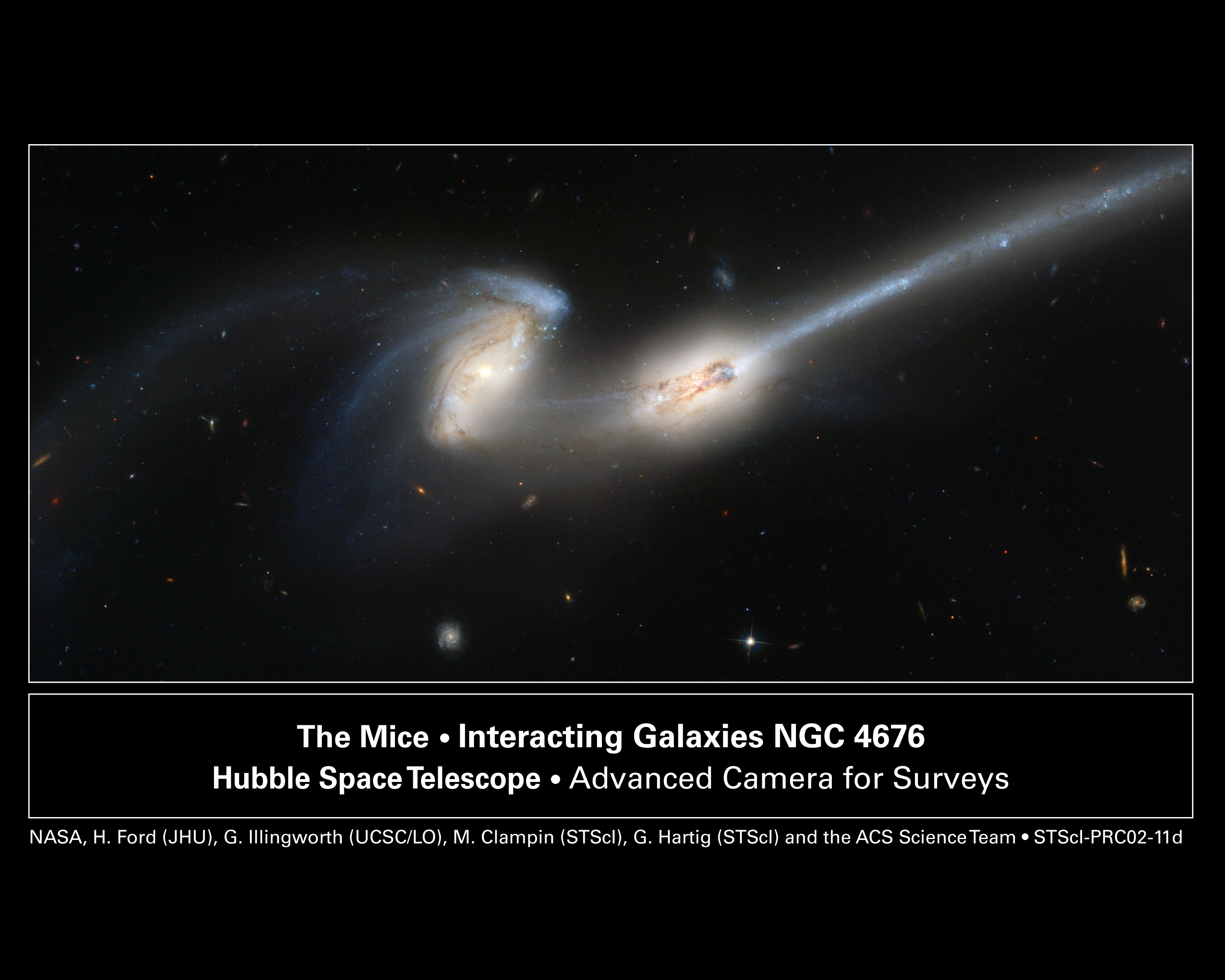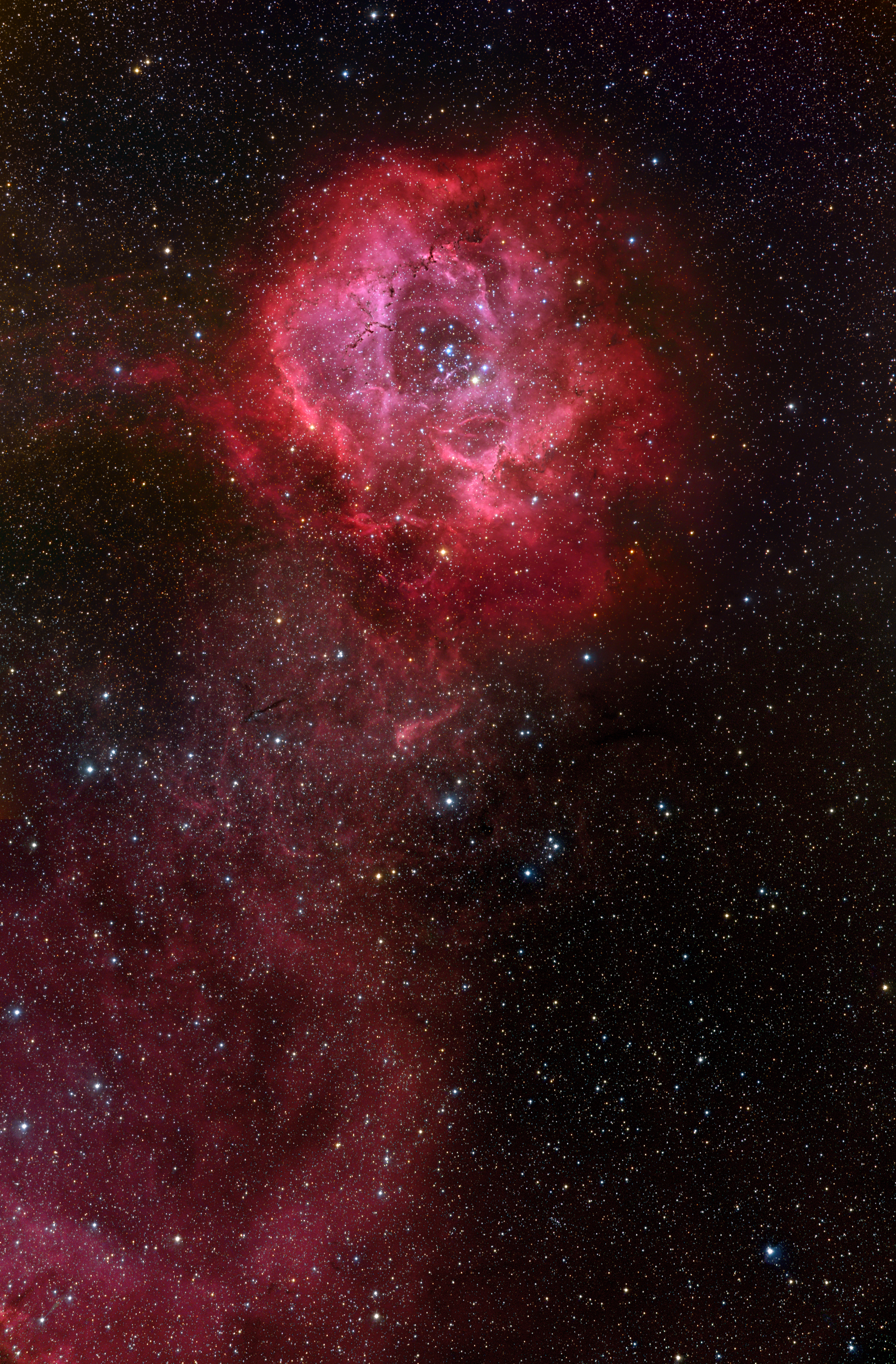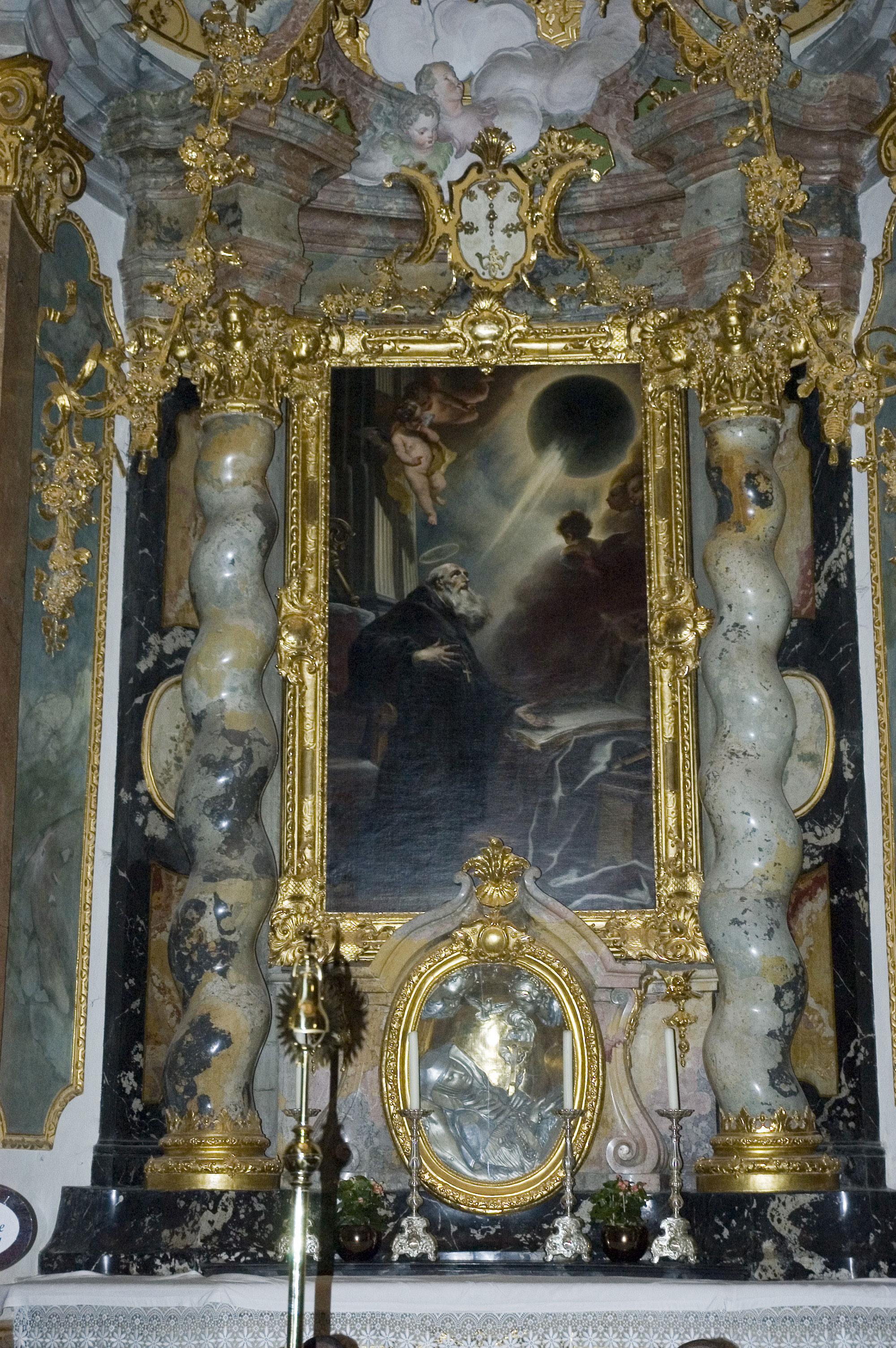
The two galaxies in the picture are pulling each other apart. They are referred to as the mice because they have such long tails. The tails are caused because the difference in their gravitational pulls on different areas of the galaxies. Of course, this is all happening extremely slowly. NGC 4676 is about 300 million light-years away and is located in the constellation Coma Berenices. This picture was taken with the Hubble Telescope.



